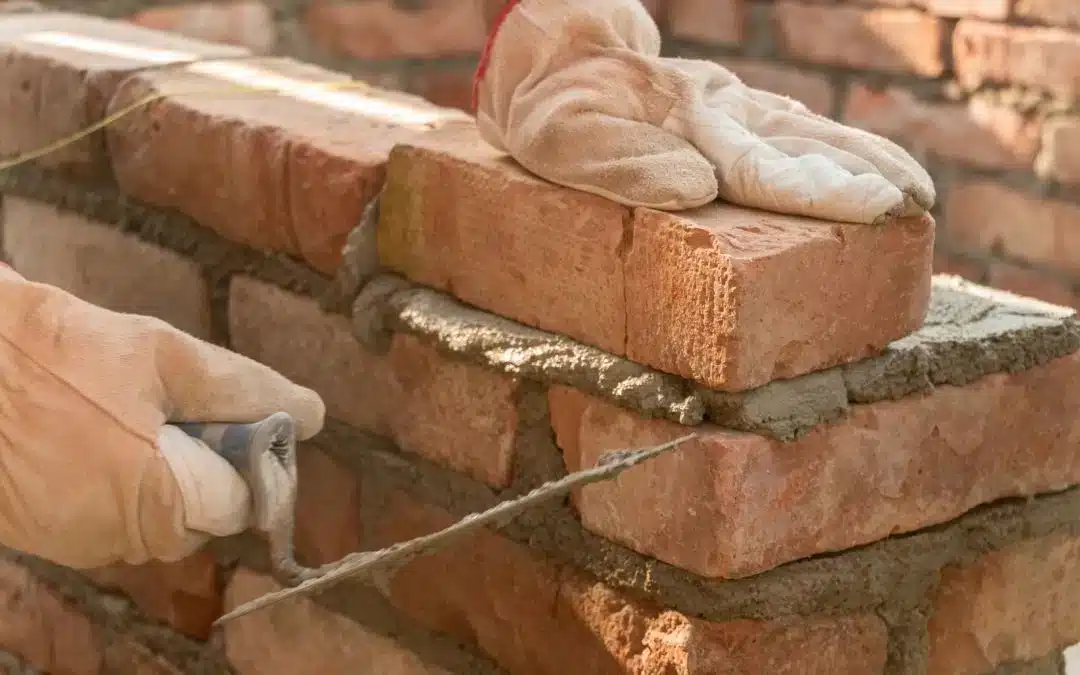Mortar is the ‘glue’ that binds the bricks or stones together, which bears some of the biggest responsibilities of home construction and design, as well as longevity.
Even the bricks that enclose the house, as well as the mortar used to join them, mirror the exercise of utilizing every part that will shield the building from adverse from the outside world apart from preserving a valued figure.
Still, years pass, and no matter how well-constructed brick walls might have been, everything wears out after some time.
Identifying signs that your external masonry needs repair ensures they do not escalate and are costly to repair while ensuring your home’s structure is intact.
Let’s explore the common signs that suggest it’s time to consider brick repair and how addressing these issues promptly can benefit you.
1. Cracks in the Bricks or Mortar
In the following sections, we explain some of the most common signs that indicate that your exteriors need masonry repair. The first is clear breakages and cracks in the bricks or mortar.
It is worth noting that cracks may appear for many causes, such as the natural process of the structure’s relaxation and changes in temperature and humidity.
Loose hairs are significant, and if overlooked, they worsen to form ugly hairline cracks.
- Vertical Cracks: These are habitual and can result from the natural settling of the building and structures; though tricky, they need constant checks.
- Horizontal Cracks: These suggest the presence of structural problems or, at the very least, entail that structuring has occurred and is always critical.
- Stair-Step Cracks: These are typically around areas that are likely to exhibit movement. They appear in steps vertically in blocks across the height of a particular wall, as in the following photo: Woob Woob; staircase cracks.
If left unresolved, cracks in your brickwork are likely to do more harm; water seepage is evident to compromise the integrity of your wall over time.
For any of these types of cracks, it is advisable to seek the service of a professional to offer a diagnosis and possibly brickwork.
2. Bulging or Bowing Walls
If there are defects such as bulging and bowing walls, then it is high time that you sought the services of a mason.
This problem tends to develop when water remains trapped behind the brickwork, ensuring that the bricks expand outwards.
This, in turn, puts more pressure on unyielding walls, pushing them back so much that, in time, they weaken and become unsafe for habitation.
- Causes: Moisture buildup behind the bricks can be caused by poor drainage, improper installation, or severe weather conditions.
- Consequences: Bulging walls can lead to partial or complete wall collapse if left untreated.
Addressing bulging or bowing walls typically requires professional intervention.
A masonry expert can assess the extent of the damage and recommend the best course of action, whether repairing the existing structure or rebuilding a portion of the wall.
3. Efflorescence on the Surface
Efflorescence refers to the white ash-like substance that sometimes develops on the surface of the bricks.
It happens because salts are soluble in water within the masonry materials; they move to the surface with water, and on evaporation, they crystallize.
Efflorescence is not a problem, but it is a sign of too much moisture in the structure.
- Appearance: Tiny critics of a white strip of chalk on the scoff of bricks.
- Causes: It has been caused by problems in providing an adequate drainage system, too much moisture during the construction process or poor artistry in the sealing of the brickwork.
If you notice efflorescence on your brickwork, it’s essential to identify and address the source of moisture.
In other words, just washing a stain will not suffice if the cause of the stains has not been dealt with.
A masonry professional could establish the cause and inform the homeowner of the right steps to avoid future occurrences with solutions for repairs on bricks.
4. Spalling Bricks
Spalling relates to the process where bricks ASTM C 1202, the water penetration resistance of bricks, and their failure through interventions of freeze and thawing have their surfaces flake off.
When the water seeps into the brick and freezes it, it expands and causes some parts of the bricks to peel off.
Besides, it is cosmetic and harms what may be a costly brick-and-block facade of your home.
- Signs: Damaged bricks, such as flaking, chipping or crumbling.
- Causes: Inadequate washing, wetting and drying cycles or using inferior quality bricks.
Spalling is evidence that the bricks you have put up require your attention.
In some cases, brick repair may require replacing a few of the affected bricks; in others, it may entail re-pointing the joints; still, in other cases where the damage is severe, it may only require a protective coating.
5. Deteriorating Mortar Joints
They are of major importance as they define the strength of the walls and the stability of the constructed masonry.
This can be because the mortar can wear off due to weather attacks, such as water seepage and aging.
Loosening the mortar joints is not only aesthetically problematic but can also cause serious problems if remedial action is taken after some time.
- Signs: Mortar that has either cracked, chipped, or receded from the masonry units’ face.
- Consequences: Thin joints, which are caused by weak mortars, create avenues through which water penetrates, further damaging the brickwork and possibly presenting structural issues.
6. Dampness or Water Infiltration
Cracks visible on the interior walls or around doors or windows may indicate that your brickwork is letting water into your home.
If water gets into the building, its consequences will become much worse, such as mold production, wood decay, or vomiting in the interior.
- Signs: Wall discoloration, areas with a mildewed or moldy smell, and blistering or flaking paint on interior walls.
- Causes: Defective bricks, applied mortar, openings, and weeps, structural movements, poor water shedding, water penetration, salts, cracks, and movement joints.
7. Settling and Foundation Issues
It is possible for homes to ‘settle’ slowly over some time, hence deforming the foundation and cracking the masonry.
Thus, while a certain degree of settlement is expected and pancim, excessive or abnormally high movement results in pathologies that demand repair and restoration.
- Signs: This is in the form of corridors with cracks in the walls and/or floors or different blocks of the institution with different calibrated floors.
- Causes: Erosion by soil movement or little construction, ineffective or lack of drudges.
If you have doubts that your home’s foundation may be responsible for the masonry problems, it is high time to turn to a specialist.
You should ensure that you deal with the foundation issues before they worsen because they are a severe threat to your home, and you may require the brickwork repaired.
8. Old Age and Wear
As we build the best homes with better materials and workmanship, they will eventually show signs of aging.
Brick structures are exposed to severe wear by elements, constant changes in temperature, and natural aging.
- Signs: Cracks, darkened or eroded brickwork, spalling, visibly eroded mortar, or other signs of aging.
- Maintenance Tips: Masonry structures should be checked regularly and serviced often so they do not require a major overhaul.
If your house walls are brick, it is highly advisable to contact a masonry specialist to advise on preventive measures or repairs.
In addition to maintaining your home’s aesthetic appeal, proper brickwork maintenance will ensure that your investment is secure and safe.
Conclusion
Recognizing the signs that your home’s masonry needs attention is the first step in maintaining its beauty and structural integrity.
Whether it’s cracks, bulging walls, or efflorescence, addressing these issues promptly with professional brick repair can save you from more extensive and costly repairs.
Regular maintenance and inspections are key to ensuring that your home remains a safe and comfortable place to live.
If you’ve noticed any of these warning signs, don’t hesitate to consult a masonry expert to assess the situation and recommend the best course of action.








